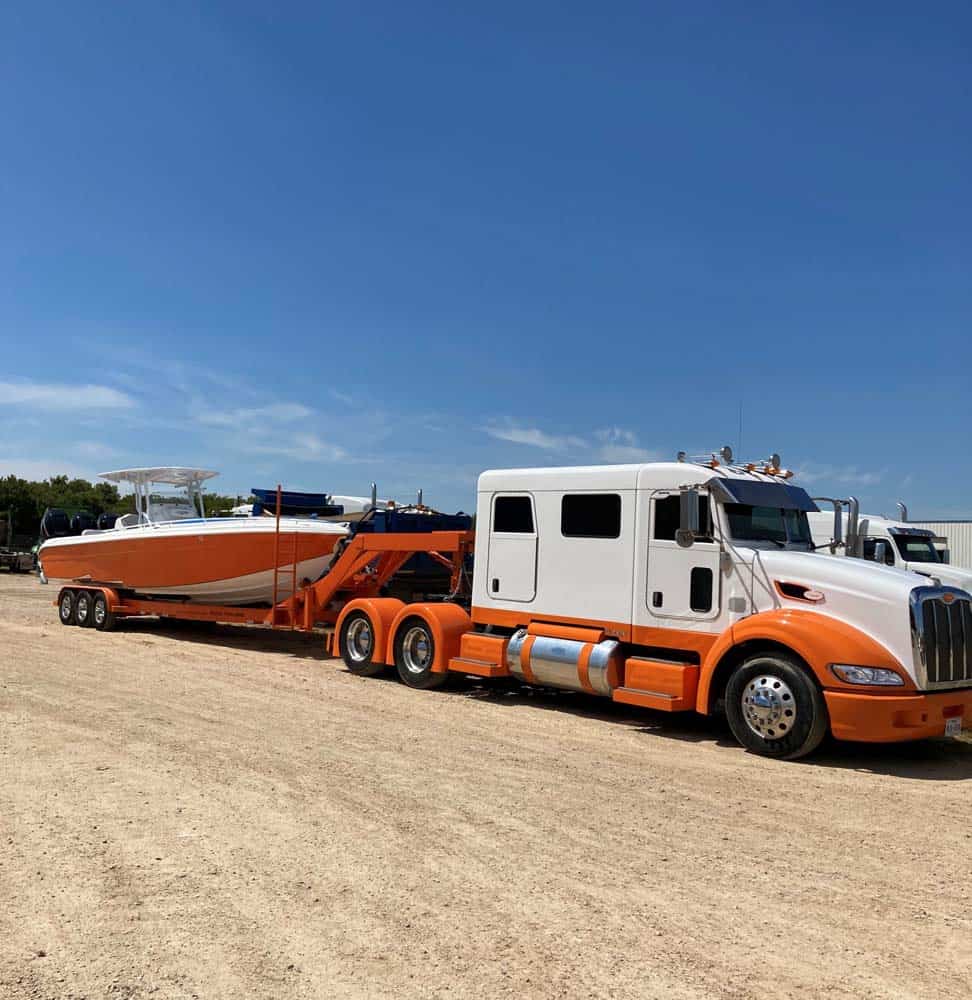How to Load and Haul a Tractor with Shipping Costs
How to Load and Haul a Tractor with Shipping Costs
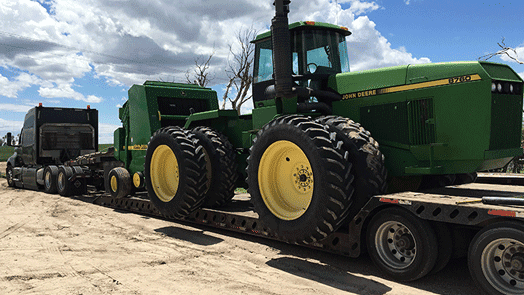
Transporting a tractor can be difficult, time-consuming, and expensive. Preparation, communication, compliance with local, state, and federal regulations, and strict safety procedures are musts for any machine going from Point A to Point B. Many times it is easier to hire a professional transport provider to haul a tractor for you, especially over longer distances.
VeriTread can help you with all of your tractor transport needs. Our service connects shippers with qualified transport companies around the country who have extensive experience in transporting heavy equipment and oversize loads. Still, it’s best to know everything about the process, should any surprises arise.
Let’s dive into what it takes to safely and legally transport a tractor from one place to another.
Preparation is Key for Successful Tractor Transport
Perform a Documented Risk Assessment
To ensure that you can handle the risk of a situation, it is important to conduct an assessment. You will document what steps are taken in response and how they could fail so things never get out of control or cause unnecessary harm.
Outfit Sites & People With PPE (Personal Protective Equipment)
The safety of your crew is the backbone of transport. Without proper protection, they can be at risk not only while preparing for and completing tasks but also during transport if you’re carrying heavy cargo. Focusing on PPE documentation will strengthen the overall assessment skill set because it highlights how we take care of ourselves when working with risky loads and situations.
Determine the Weight and Dimensions of Your tractor
Every load begins with knowing the dimensions and weight of your load. The height, width, length, and weight of your tractor is a vital factor when transporting it. The DOT regulations for transportation revolve around these dimensions. Verify them before you begin to avoid unnecessary fines, delays, or accidents.
Inspect Your Truck and Trailer
Make sure your truck has adequate power to tow the load and your trailer is rated to handle the cargo weight. Inspect your truck and trailer is in good working order, pay specific attention to the tires, lights, brakes, tie-down points, and hydraulic hoses. Equipment failures can lead to delays, injury, or even death. If you notice any potentials problems, take time to address them before you get on the road.
How to Load a Tractor Safely
1) Designate Duties
Make sure everyone involved in loading the tractor has been trained properly. Not only do they need to know what they’re doing, but also how their actions might cause damage or injury if carried out improperly.

2) Make sure the trailer you are loading onto is on flat, level ground
A tilted trailer can cause rollover problems that are easily avoidable.
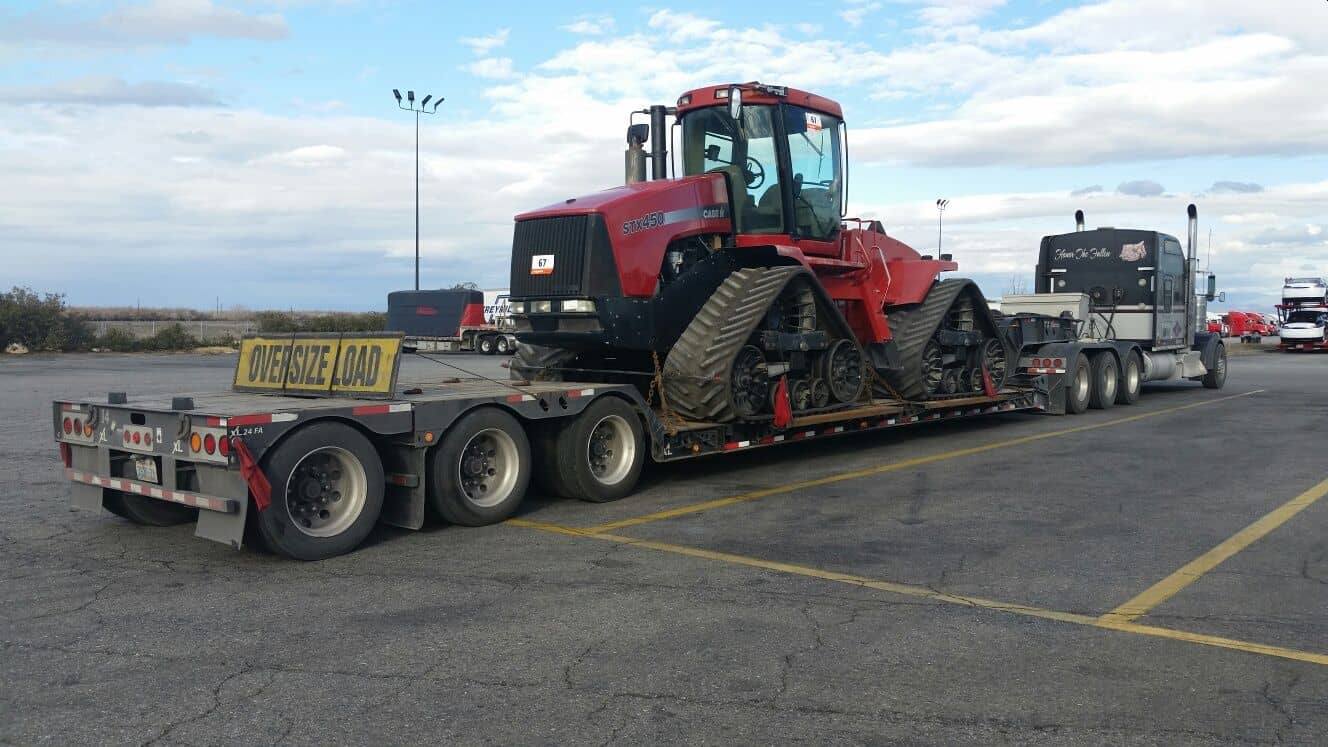
3) Be aware of all obstacles in your area
Adjust your loading strategy to avoid hitting any nearby objects and move everything to a safe distance if possible.
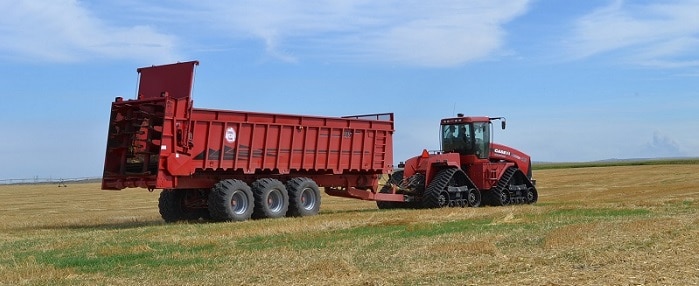
4) Check that your truck can handle the load and is parked and secure
Use the parking brakes and wheel chocks on the front and rear wheels of the trailer to prevent unwanted movement.
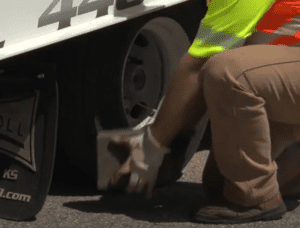
5) Check your trailer deck
Make sure it is as clean as possible and ready to accept the load. A clean work area has the fewest problems.
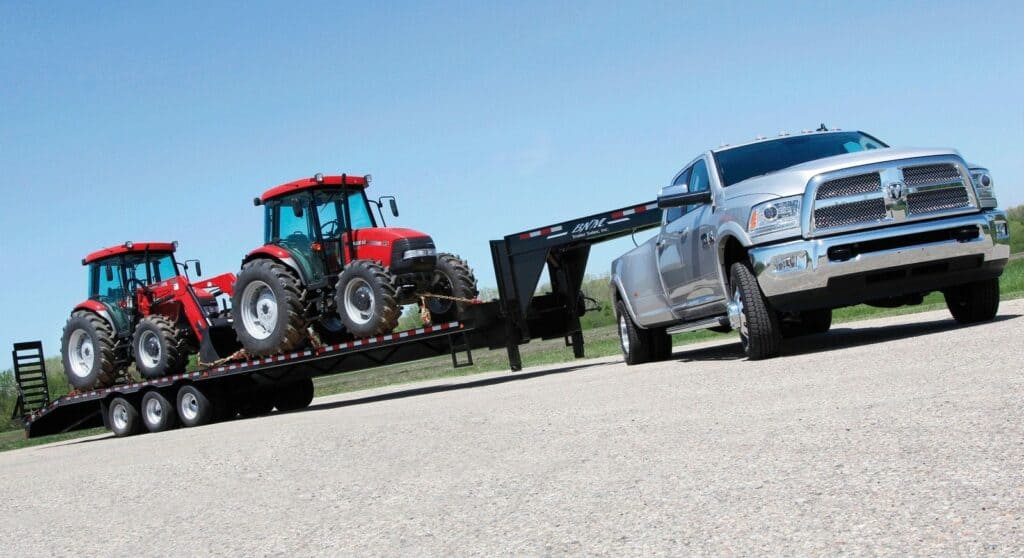
6.) Line up and approach the trailer, straight on
Use a spotter if your view is obstructed. Slowly drive your machine onto center of the trailer. Make sure the machine gently lowers itself down on the trailer to avoid damaging the machine or trailer. Once you have climbed onto the trailer, ensure all buckets and attachments are tucked towards the floor of the trailer.
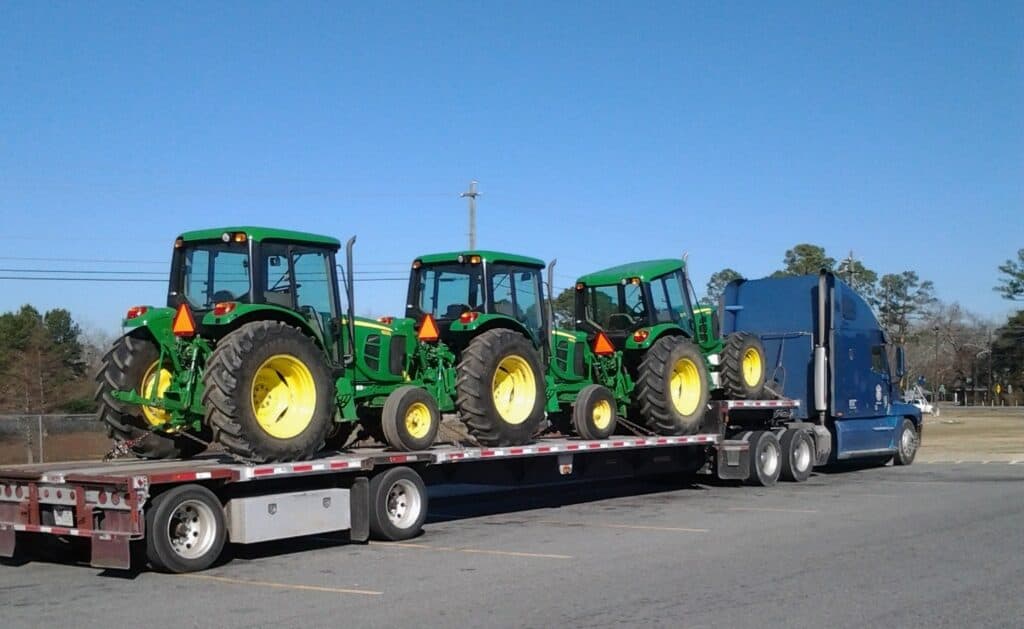
7) Secure Your tractor Loader for Transport
All equipment attachments, work tools, and other accessory equipment must be lowered and secured before transportation. Retract booms and buckets and secure them in place. Secure equipment components (lock all doors, covers, tailgates, and articulation points). Also, make sure the machine transmission is immobilized and brakes are locked.
For additional protection to your equipment, you may choose to cover it with a tarp or wrap it with shrink wrap. This protects the equipment from dirt, debris, and moisture on the roadways. For equipment with a smokestack, be sure to cover it so debris cannot enter. Use ample & appropriate securing devices (chains, binders, straps, & anchors). Choose appropriate attachment points on the machine and trailer.
Once the load is secured, check everything a second time. It can be helpful to have a safety check system in place where multiple people check the load, instead of relying on a single person.
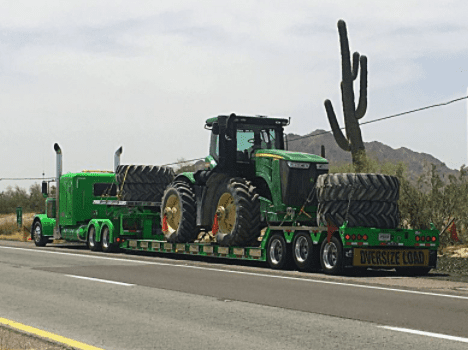
8.) Verify Driver Visibility
Make sure the driver has a clear view of what’s going on around them. The placement of the tractor should also allow free movement for the driver and should not obstruct them from exiting the vehicle or accessing any necessary vehicle components or accessories. This ensures the driver can safely transport the machinery and keeps your company compliant with DOT regulations.
How Much Does it Cost to Ship a Tractor?
Shipping a tractor can be daunting task especially if it is a large tractor that requires disassembly and transport on multiple trucks. This preparation can often lead to long lead times for shipping tractors. Small to mid size tractors can usually stay under legal load dimensions. Larger tractors involved in heavy lifts usually fall into oversize loads that require special permits and larger trailers for transport.
Pricing can vary greatly depending on these factors and that is why it is critical to use an established transport provider of you could have a terrible outcome when you are looking to ship your tractor.
The four main factors the effect the price of shipping a tractor are
- Loading Assistance and Dissassembly
- Distance the tractor needs to move
- Trailer Type Utilized in Transport
- Dimensions of your Tractor
VeriTread can provide a quick estimate to ship a tractor by using our exclusive freight estimator.
To receive an actual transport provider quote, can you post your tractor to our freight marketplace free of charge and receive vetted carrier quotes from the largest network of equipment transport providers in North America.
We believe it’s always good to know what all is involved in a heavy equipment freight quote, so let’s dive deeper into the factors involved in pricing machinery transport on an open deck trailers
Your Tractor Dimensions Are Very Important
The most important factor in the cost to ship a tractor is providing accurate dimensions. Most carriers try to keep their freight at or below the legal load dimensions of:
- Weight = 80,000 lbs.
- Height = 13 feet 6 inches
- Width = 8 feet 6 inches
- lenght = 48 to 53 feet
These dimensions also include the trailer. This is why it is critical for the transport provider to know the length, width, height, and weight of the machine with all attachments. If a machine exceeds legal load dimensions, prices can increase dramatically due to added permits, escorts, and restricted routes. Providing pictures of the tractor is also helpful to assure that nothing critical is missed that could affect the price of the quote.
The Trailer Used Can Impact The Price
Trailers are a significant factor in keeping your tractor inside of legal load dimensions. Most heavy equipment is transported on three trailer types: flatbeds, step decks, lowboys- RGN’s . The larger the trailer, the more expensive per mile hauled which is an additional cost you will need to consider.
A typical flatbed trailer is 5 feet above the ground, meaning freight cannot exceed 8’ 6” inches in height. Flatbeds are the most economical way to transport tractor, but they do require a dock or loading assistance if they do not have ramps. Generally a flatbed would only be used if a tractor requires disassembly as a way to save on the shorter parts of the tractor.
A typical step deck can transport items up to 10’ 2” tall. Step deck trailers generally have an 11-foot-long upper deck, and 37-foot-long lower deck (equaling general legal max length of 48 feet). Step deck trailers generally weigh more than flatbed trailers, meaning freight weight needs to be closely considered so it doesn’t exceed the 80,000-pound limit.
Lowboy & RGN Trailers
Lowboys & RGNs can haul freight up to 11’ 6” in height. RGN & Lowboy trailers generally haul freight that is up to 11” 6” tall. The length of a lowboy well ranges from 24’ to 29.6’. A 25’ well is perfect for hauling most equipment, such as bulldozers. Tri- Axle trailers generally can support weights up to 55,000 lbs, but can be configured to support up to 150,000 lbs. The larger and heavier the load, the higher the cost.
Lowboys and RGN and use extensively when transporting medium to large tractors that don’t require disassembly.
How Much Does it Cost to Haul a Tractor Per Mile?
Most companies will ask for around $3 per mile when moving your tractor within a 500-mile radius. If your pick up or drop off is in a congested metro area that restricts the carrier movement, then additional charges could be added.
How Long Does It Take to Load Your Tractor?
You can save a considerable amount of money if you can provide disassembly and load assistance (loading dock, forklift, tractors, etc.), so make sure you communicate this to your transport provider.
Do You Need Help or Have More Questions In Shipping a Tractor?
VeriTread is your go to solution for shipping a tractor. We help you haul a tractor safely and on time delivered to any destination in North America. We are experts in connecting you with a transport provider that can handle all the paperwork, select the right trailer and driver, and chart the most efficient route.
VeriTread moves thousands of tractorevery year and can quickly generate a reliable estimate on the go. Our extensive specs and dimensions database of 60,000+ items, ensures you spend less time researching and more time putting your equipment to work.
The VeriTread Shipper quote process is the simplest way to receive competitive quotes from vetted transport providers. Follow these easy steps and you will receive a quote in under one minute:
- Select Ready To Ship from the Freight Options Page
- Enter a Manufacturer & Model
- Verify or Edit Your Machine Dimensions
- Enter Pickup & Drop Off Locations
- Your Quote is Ready!
We believe our suite of innovative decision tools empower our customer to make smarter and more informed transportation decisions, reducing overall uncertainty, and saving you time and money. If you have any questions contact us at (800) 880-0468 or (863) 226-0903 and let our team of experts help you with your transport needs.
CATEGORIES
recent posts
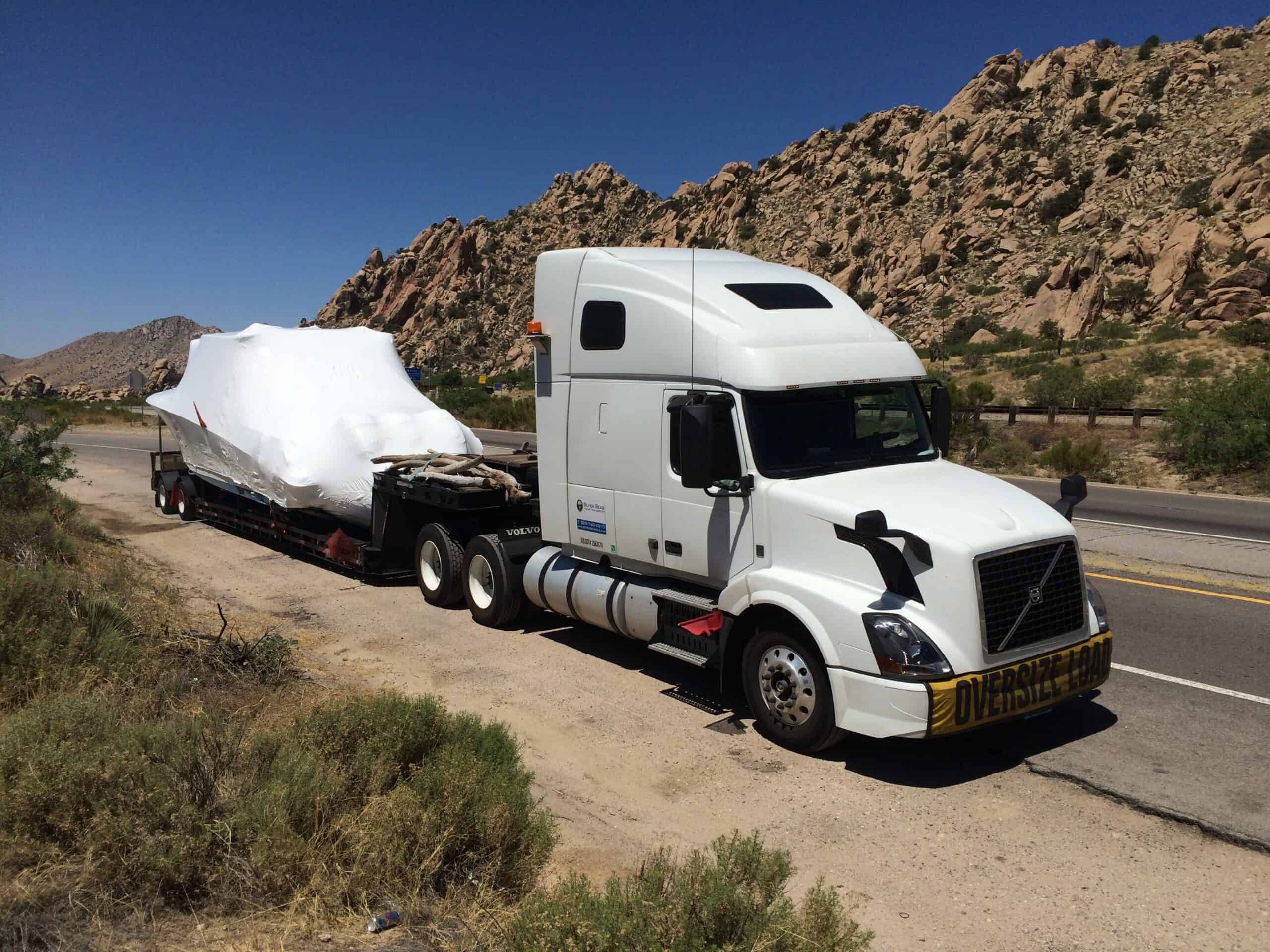
Anchoring Your Budget: Understanding and Managing Boat Transport Costs
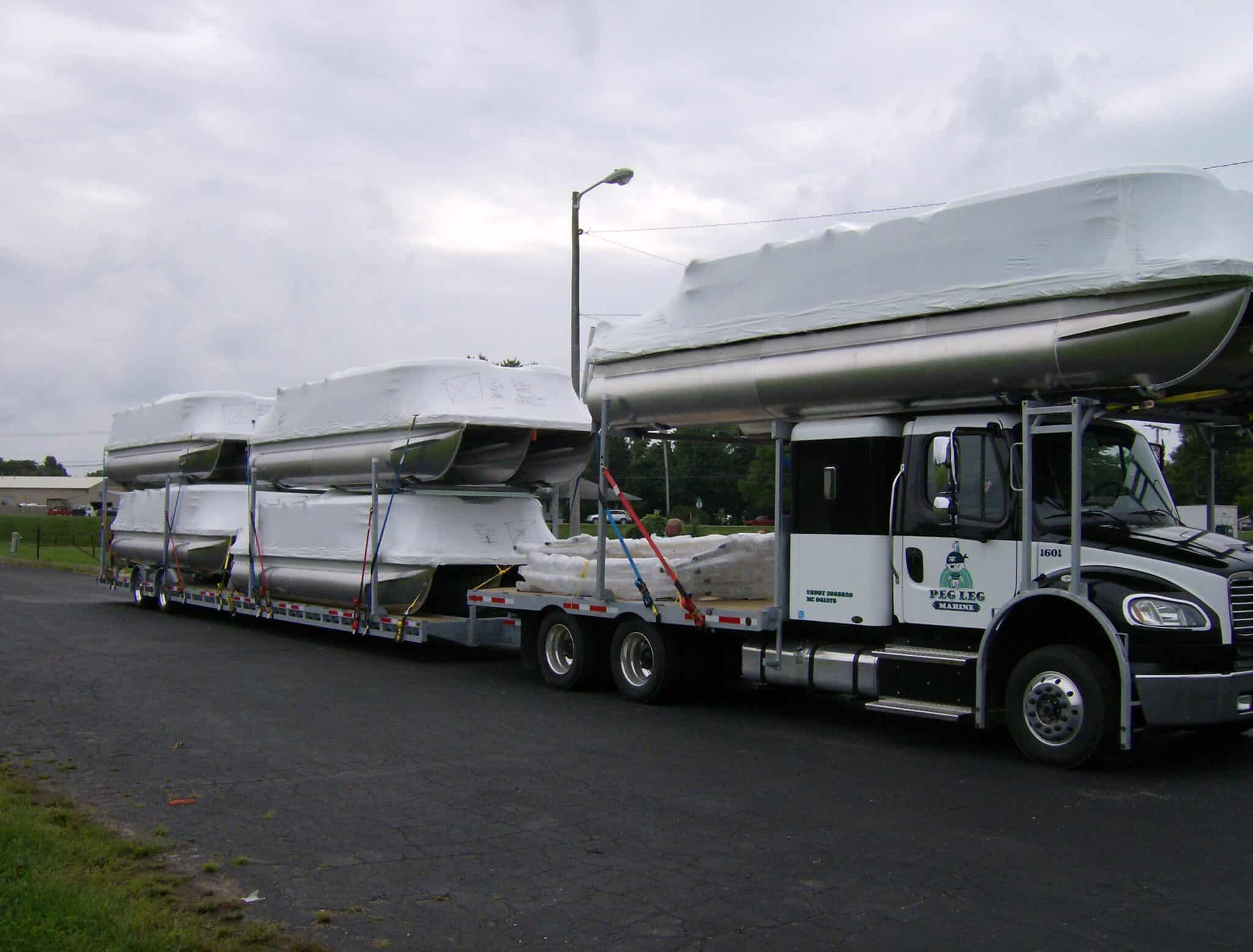
Your Guide to Boat Transport Regulations and Permits
